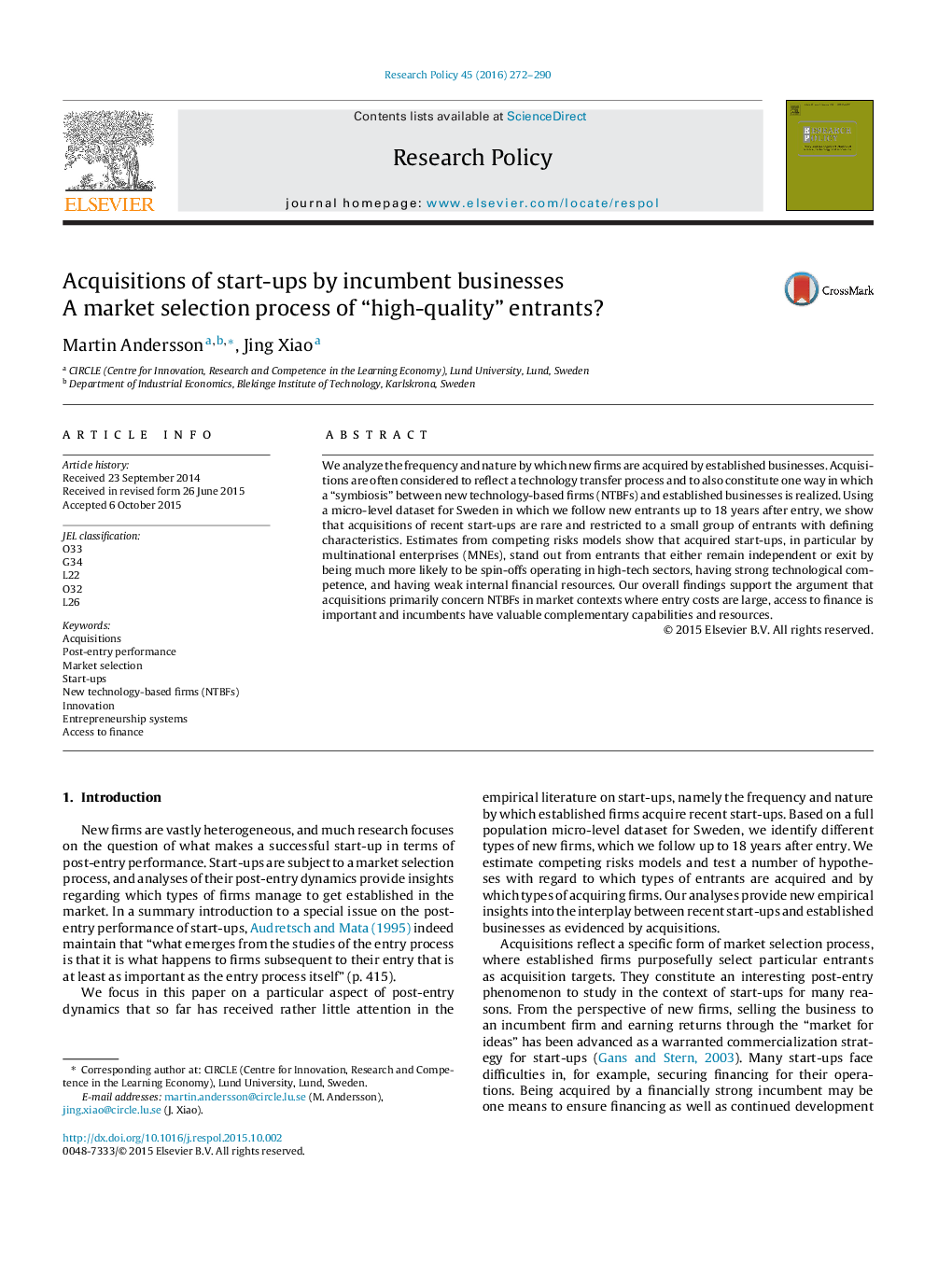| Article ID | Journal | Published Year | Pages | File Type |
|---|---|---|---|---|
| 10483265 | Research Policy | 2016 | 19 Pages |
Abstract
We analyze the frequency and nature by which new firms are acquired by established businesses. Acquisitions are often considered to reflect a technology transfer process and to also constitute one way in which a “symbiosis” between new technology-based firms (NTBFs) and established businesses is realized. Using a micro-level dataset for Sweden in which we follow new entrants up to 18 years after entry, we show that acquisitions of recent start-ups are rare and restricted to a small group of entrants with defining characteristics. Estimates from competing risks models show that acquired start-ups, in particular by multinational enterprises (MNEs), stand out from entrants that either remain independent or exit by being much more likely to be spin-offs operating in high-tech sectors, having strong technological competence, and having weak internal financial resources. Our overall findings support the argument that acquisitions primarily concern NTBFs in market contexts where entry costs are large, access to finance is important and incumbents have valuable complementary capabilities and resources.
Related Topics
Social Sciences and Humanities
Business, Management and Accounting
Business and International Management
Authors
Martin Andersson, Jing Xiao,
